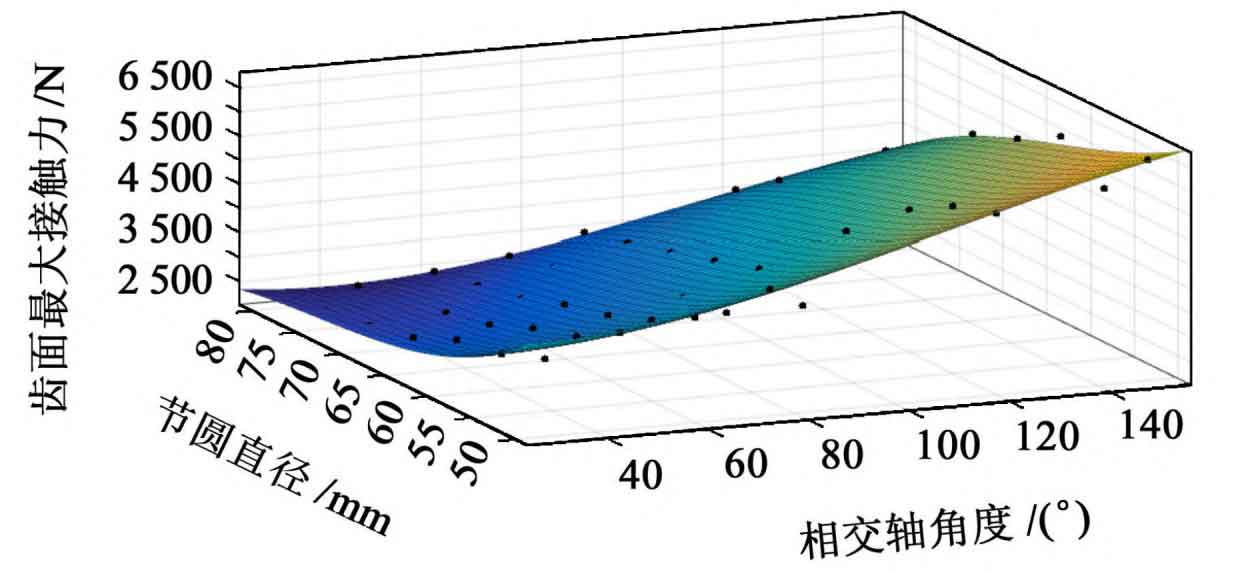The contact strength of the hemispherical bevel gear is characterized by the contact force of the hemispherical bevel gear. The results of the maximum contact force of the driven wheel at a randomly selected meshing segment are shown in the table.
| Axis intersection angle/(°) | Diameter 30 mm | Diameter 45 mm | Diameter 60 mm | Diameter 75 mm | Diameter 90 mm | Diameter 120 mm | Diameter 150 mm |
| 50 | -3650 | -4049 | -4206 | -4648 | -5701 | -5773 | -6592 |
| 55 | -3309 | -3520 | -3715 | -3712 | -3716 | -5474 | -5546 |
| 60 | -3135 | -3236 | -3382 | -3595 | -4044 | -4953 | -6183 |
| 65 | -2762 | -2864 | -3139 | -3253 | -3766 | -4528 | -5700 |
| 70 | -2554 | -2666 | -2817 | -3054 | -3490 | -4128 | -5346 |
| 75 | -2433 | -2443 | -2661 | -2875 | -3231 | -4225 | -4225 |
| 80 | -2247 | -2345 | -2495 | -2672 | -2991 | -3594 | -4118 |
The data results are fitted to obtain the surface fitting of the maximum contact force on the tooth surface under a certain load as shown in the figure.

The surface fitting formula of the maximum contact force on the tooth surface of the hemispherical bevel gear is:

It can be seen from the figure and table that the maximum contact force on the tooth surface of the hemispherical bevel gear changes regularly, and the intersection angle and pitch diameter of the countershaft of the hemispherical bevel gear are contradictory factors. With the increase of the intersection angle of the countershafts of the hemispherical bevel gear, the maximum contact force on the tooth surface increases; With the increase of the pitch diameter of the hemispherical bevel gear, the maximum contact force on the tooth surface presents a downward trend.
The analysis shows that, on the one hand, with the increase of the angle of the intersecting axis, the contact area of the tooth surface of the hemispherical bevel gear is smaller, and the contact force of the tooth surface is larger when the load and speed are fixed; However, with the increase of the pitch diameter of the hemispherical bevel gear, the tooth surface increases relatively, so under the same conditions, the contact force on the tooth surface decreases.
